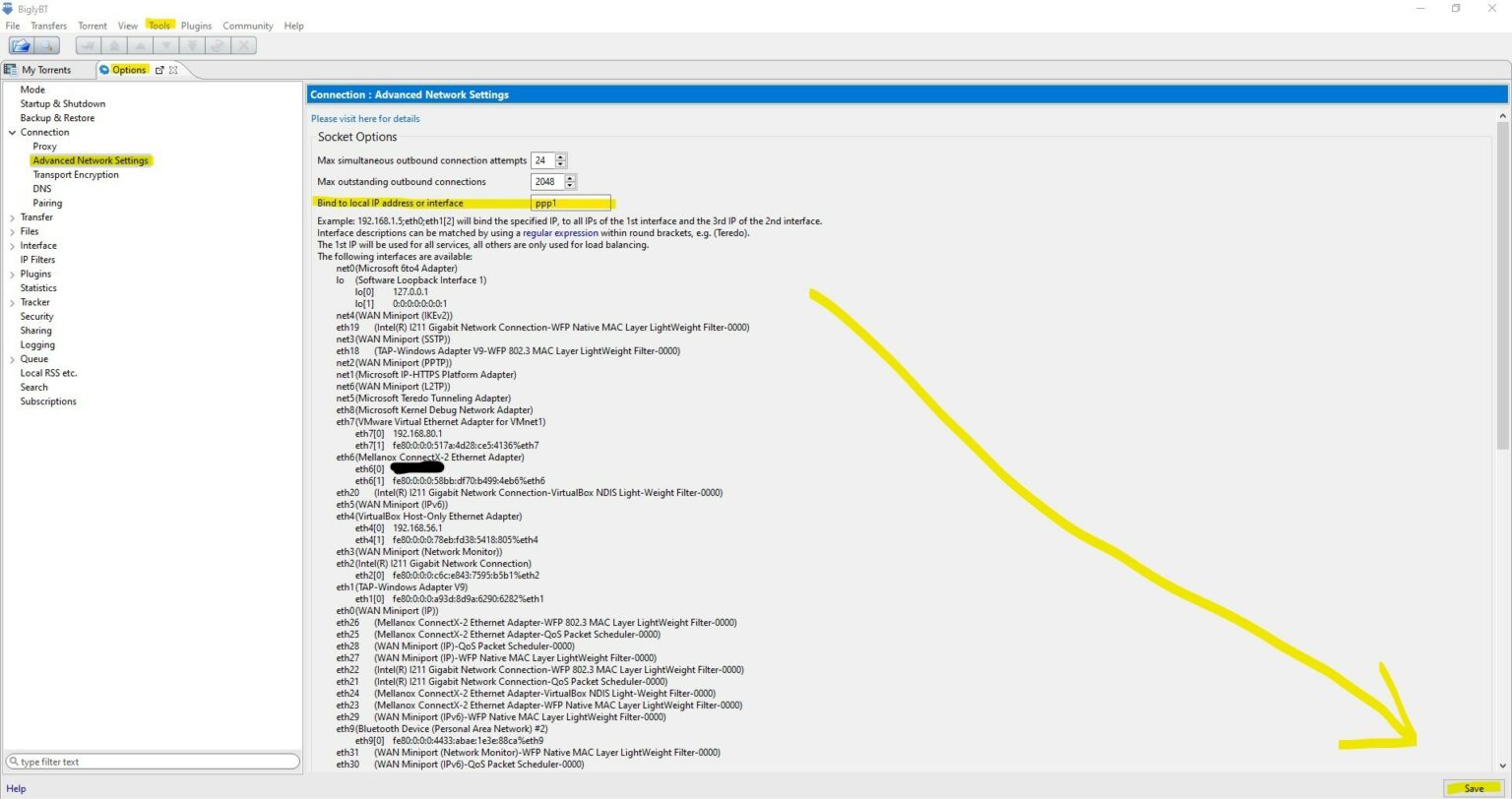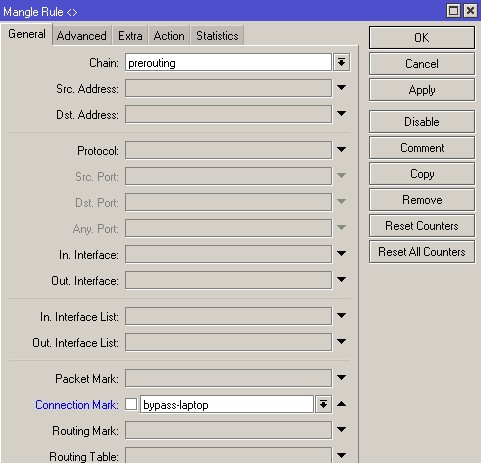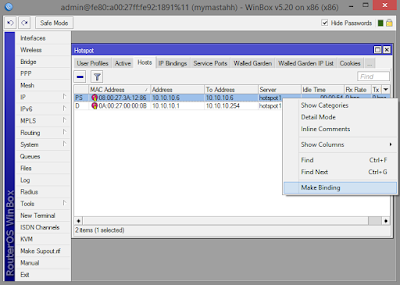

If you cannot tell which adapter is the one you should bind, check for differences when you connect/disconnect VPN.Ĭonfirm you're not leaking also via WebRTC, DNS (especially on Firefox), and IPv6. Skip the advice on disabling DHT or PeX though.

BIGLYBT IP BINDING HOW TO
Use qBittorrent (FOSS), Tixati, or BiglyBT (FOSS) as only these torrent clients support interface binding.Ĭheck this step-by-step guide for Windows, Linux or macOS for how to set up interface binding. Here's a list of top recommendations with objective criteria. In addition, some more resources for new-comers:Ĭhoose a good VPN for torrenting.

If you don't bind, you could leak torrenting traffic through your regular/real IP, which could result in copyright notices to say the least.Īnd, no, a kill-switch usually doesn't work/help.Įither your setup inherently, by design, stops torrent traffic when the VPN connection is down (binding, network namespaces, etc.) OR it doesn't. Rough concept of the end-goal: ASCII-diagram ( u/sn0skier), (obviously, it still reaches the VPN's servers via your regular internet connection)
BIGLYBT IP BINDING SOFTWARE
That's beyond the scope of this answer, but a little research will provide a method used for the VM software you are using (VirtualBox, VMware, etc.Sorry for using emojis, but there are too many posts in this godforsaken sub that are dealing with this 1 simple issue. It will be necessary to map a port on the host to this port in the guest VM. If you are running mongod on a VM using NAT, the default port 27017 will not be exposed to the host.

parameters on the command line, see the documentation currently at It's easier to change the config file instead of hunting down the script what runs it as a daemon and getting systemd to reload and use it.įor details on the YAML-ness of the config file vs. Normally, mongod is run with the -config /etc/nf parameter. It should also be noted that it is possible to add parameters to the command line that override parameters in the config file. Therefore, the configuration file should be changed to: # network interfaces edit bridge-domains bd-name forwarding-options dhcp-security userdevice set group group-name interface interface-name.
BIGLYBT IP BINDING MAC
The command line parameter is -bind_ip_all which does not have a parameter, it's existence corresponds to the bindIPAll: true parameter in the configuration file. To configure a static IP address and MAC address binding in the DHCP snooping database: Create a group by including an access interface: contentcopy zoomoutmap. This will cover situations where the VM is using a NAT interface or bridged interface. To expose the database running in a VM to the host, it's simplest to bind the database to all interfaces for testing purposes. Notice the dash notation converted to camel case. This corresponds to the -bind-ip arg parameter on the command line. The default /etc/nf file has this entry for network interfaces: # network interfaces I tried to do look up in the mongodb document, however, they does mention that bind_ip takes a comma separated list, which really confused me. It seems just not work with multiple ip addresses. However, if I change the bind_ip = 192.168.184.155Īnd restart the service, it works and I can access using mongo from my local machine. To bind_ip = 127.0.0.1,192.168.184.155,96.88.169.145Īfter I restarted the mongod service, neither the virtual machine nor the local machine can access mongodb through mongodb command and giving me the following error. I changed the bind_ip in /etc/nf file from bind_ip = 127.0.0.1 Public IP for both local machine and virtual machine: 96.88.169.145 I am trying to connect to my virtual machine which runs the mongodb instance from the local machine, which I believe should be similar to the production environment when I run it on a separate remote server. This may sounds something really simple, however, I really need your help on it. I am a newbie for setting up the server environment and mongoDB.


 0 kommentar(er)
0 kommentar(er)
